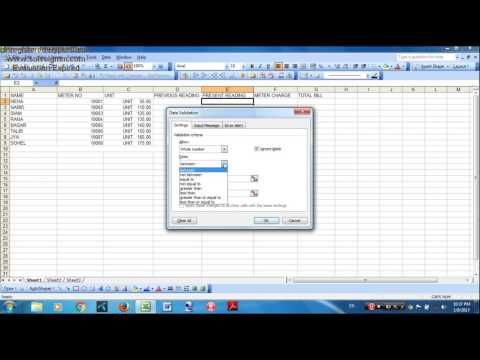Optimize Your Excel Sheets for R Integration Easily

Integrating R with Excel can significantly enhance your data analysis capabilities. By leveraging R's advanced statistical computing, data visualization, and manipulation tools, you can transform your Excel spreadsheets into dynamic data analysis platforms. Here's how you can seamlessly integrate R into your Excel workflow:
Setting Up for R Integration

Before diving into R integration, ensure your system is prepared:
- Install R and RStudio: These are fundamental for running R code.
- Install Required Packages: Common packages like readxl for reading Excel files, writexl for writing data to Excel, and RExcel for direct integration are necessary.
- Verify Excel Compatibility: Check if your Excel version supports COM automation or check for Excel plugins like RExcel.
💡 Note: If using R via COM automation, ensure you have a 32-bit version of Excel.
Steps for R Integration with Excel

1. Reading Excel Data into R

- Install and Load Packages: Start with loading packages:
install.packages("readxl")
library(readxl)data <- read_excel("path/to/your/file.xlsx", sheet = "Sheet1")2. Manipulating and Analyzing Data in R

Once your data is in R, you can:
- Perform complex data manipulation with packages like dplyr.
- Use ggplot2 or plotly for sophisticated visualizations.
- Run statistical analyses or machine learning algorithms directly on the data.
3. Writing Data Back to Excel

- Install and Load Packages: For writing back to Excel:
install.packages("writexl")
library(writexl)write_xlsx(data, "path/to/your/output.xlsx")4. Creating Custom R Functions for Excel

Develop custom R functions to encapsulate your analysis, which can be called from Excel:
custom_function <- function(x) {
# Your R code here
}Then, within Excel, you can reference this function:
=RExcelFunction("R path","function_name","argument1","argument2")5. Automating R Operations from Excel

Using VBA in Excel, you can automate calls to R for repetitive tasks or real-time data analysis:
Sub RunRCode()
Dim R As Object
Set R = CreateObject("R.REngine")
' Your R code here
R.Evaluate("data <- read_excel('path/to/your/file.xlsx')")
R.Evaluate("result <- custom_function(data)")
R.Evaluate("write_xlsx(result, 'path/to/your/output.xlsx')")
End SubWhile the above process is straightforward, remember:
- Excel's COM automation can be slow for large datasets.
- Direct integration methods like RExcel offer a smoother user experience but might have limited functionality compared to COM.
After going through these steps, you'll have harnessed the power of R within Excel, enabling sophisticated data manipulation, analysis, and visualization.
Optimizing R and Excel Integration

- Data Size Management: Handle large datasets efficiently by reading only necessary parts or using R's capabilities to manage data in chunks.
- Efficiency with Functions: Create vectorized R functions to minimize loops in Excel.
- Batch Processing: Instead of performing one analysis at a time, process multiple analyses in one R session.
Here's how you can structure your R code for efficiency:
library(tidyverse)
efficient_processing <- function(data) {
# Vectorized operations
result <- data %>%
group_by(some_column) %>%
summarize(mean_value = mean(some_numeric))
return(result)
}By structuring your R code to work efficiently with Excel, you can:
- Minimize computation time.
- Reduce memory consumption.
- Ensure faster integration results.
To wrap up, integrating R with Excel allows you to leverage R's statistical prowess, data manipulation, and visualization capabilities directly within your familiar Excel environment. Whether you're running complex analyses, automating repetitive tasks, or creating dynamic visualizations, this integration significantly enhances your productivity and data handling prowess. Following these steps ensures you can effectively leverage the strengths of both R and Excel, making your data analysis process more robust, insightful, and efficient.
What is the advantage of using R with Excel?

+
The main advantages include accessing R’s powerful statistical tools, data manipulation capabilities, and visualization libraries within Excel’s user-friendly interface.
Can I run R code directly from Excel?

+
Yes, with tools like RExcel or by using COM automation, you can execute R functions directly from Excel, simplifying the data analysis workflow.
How do I handle large datasets in R and Excel?

+
Manage large datasets by reading only necessary data, using chunk processing in R, and optimizing your data operations to avoid memory overload.